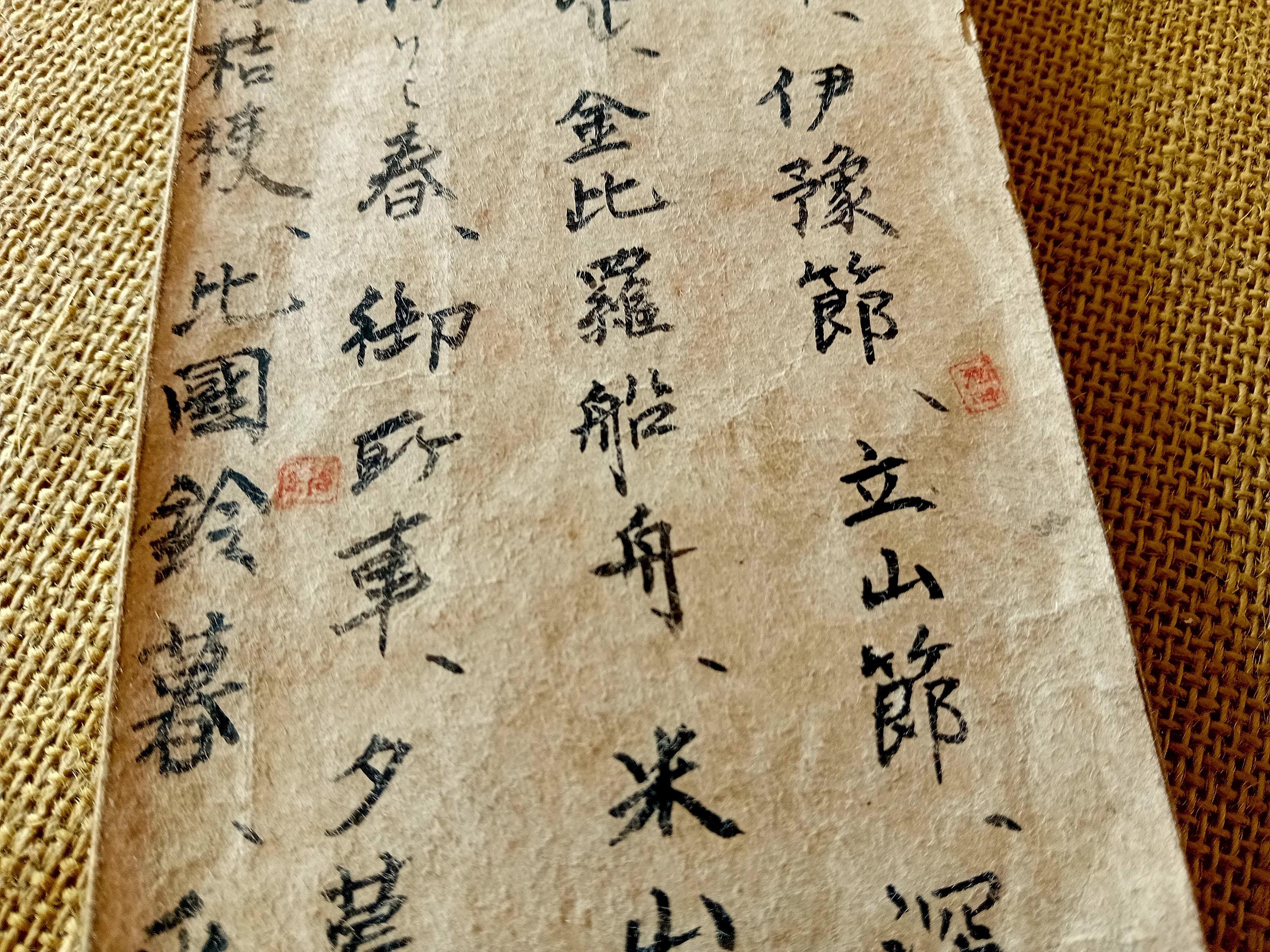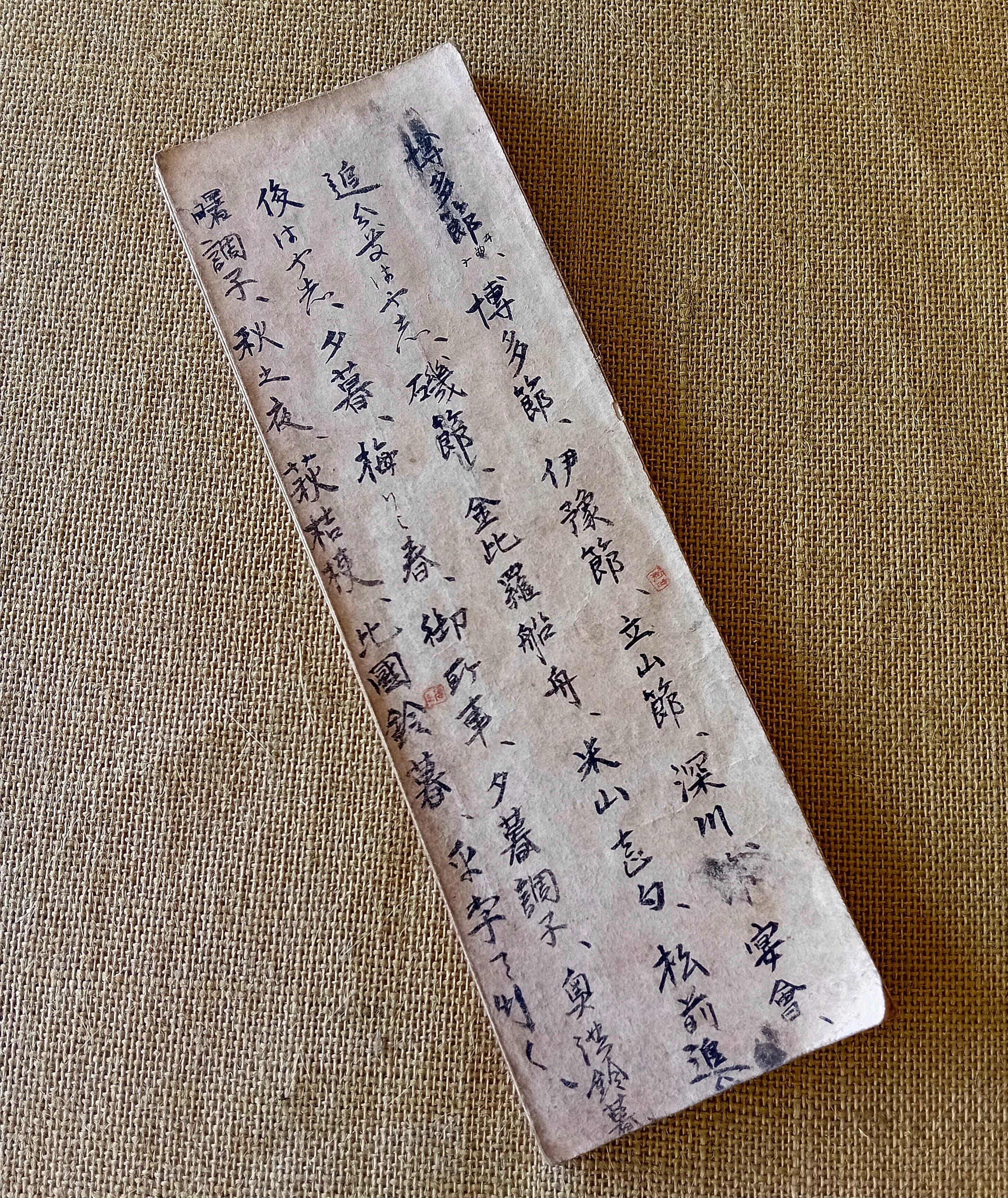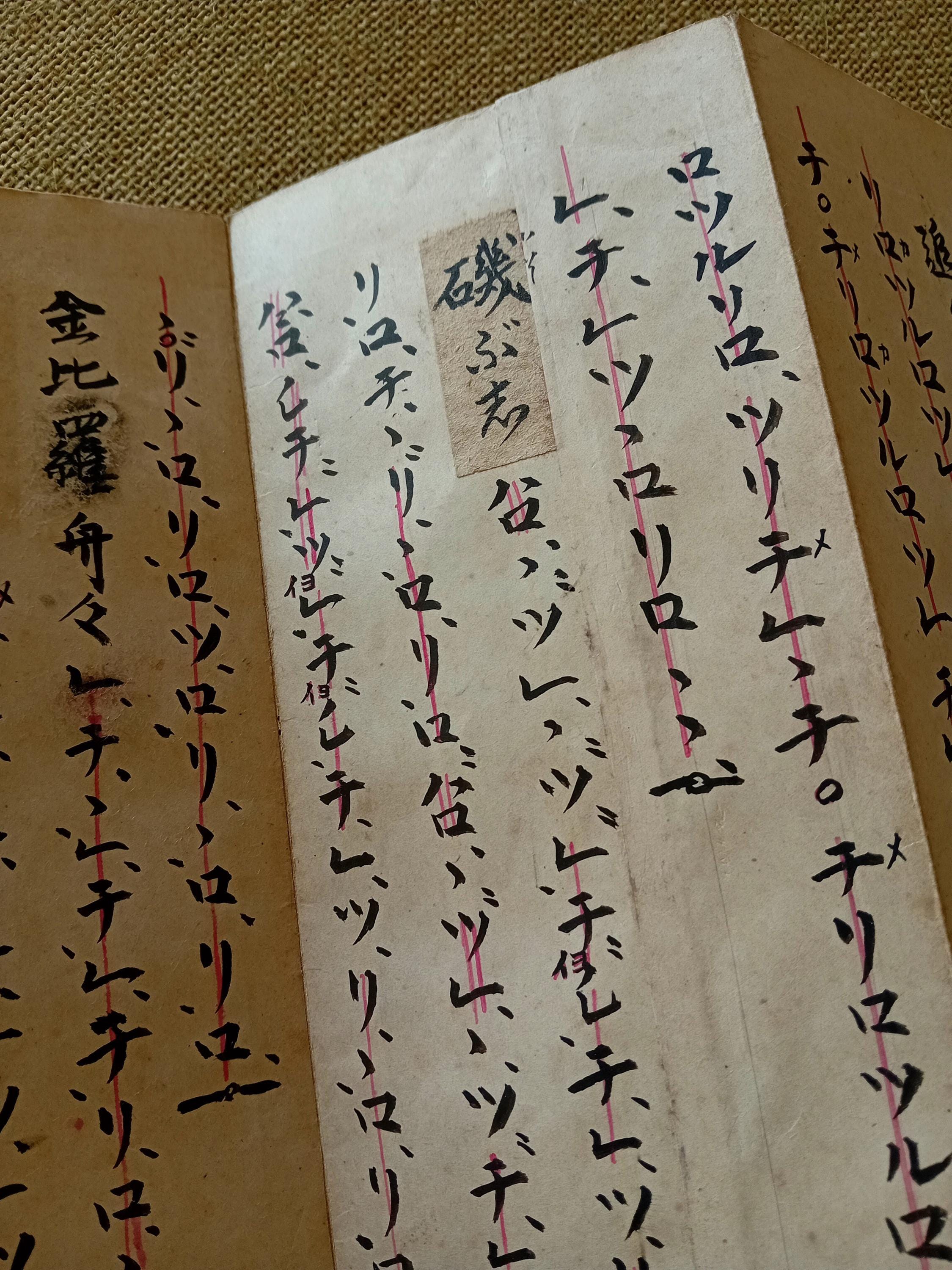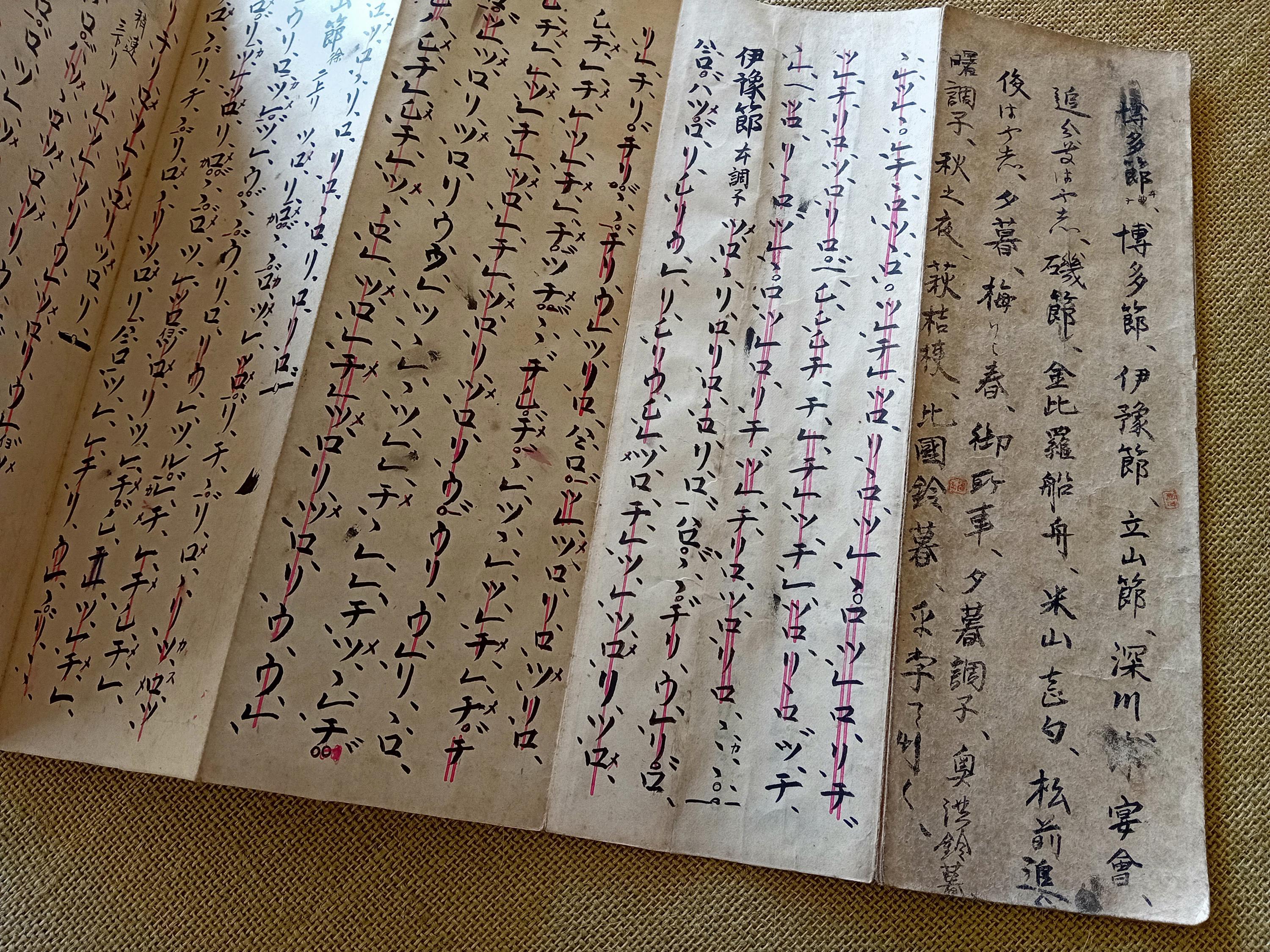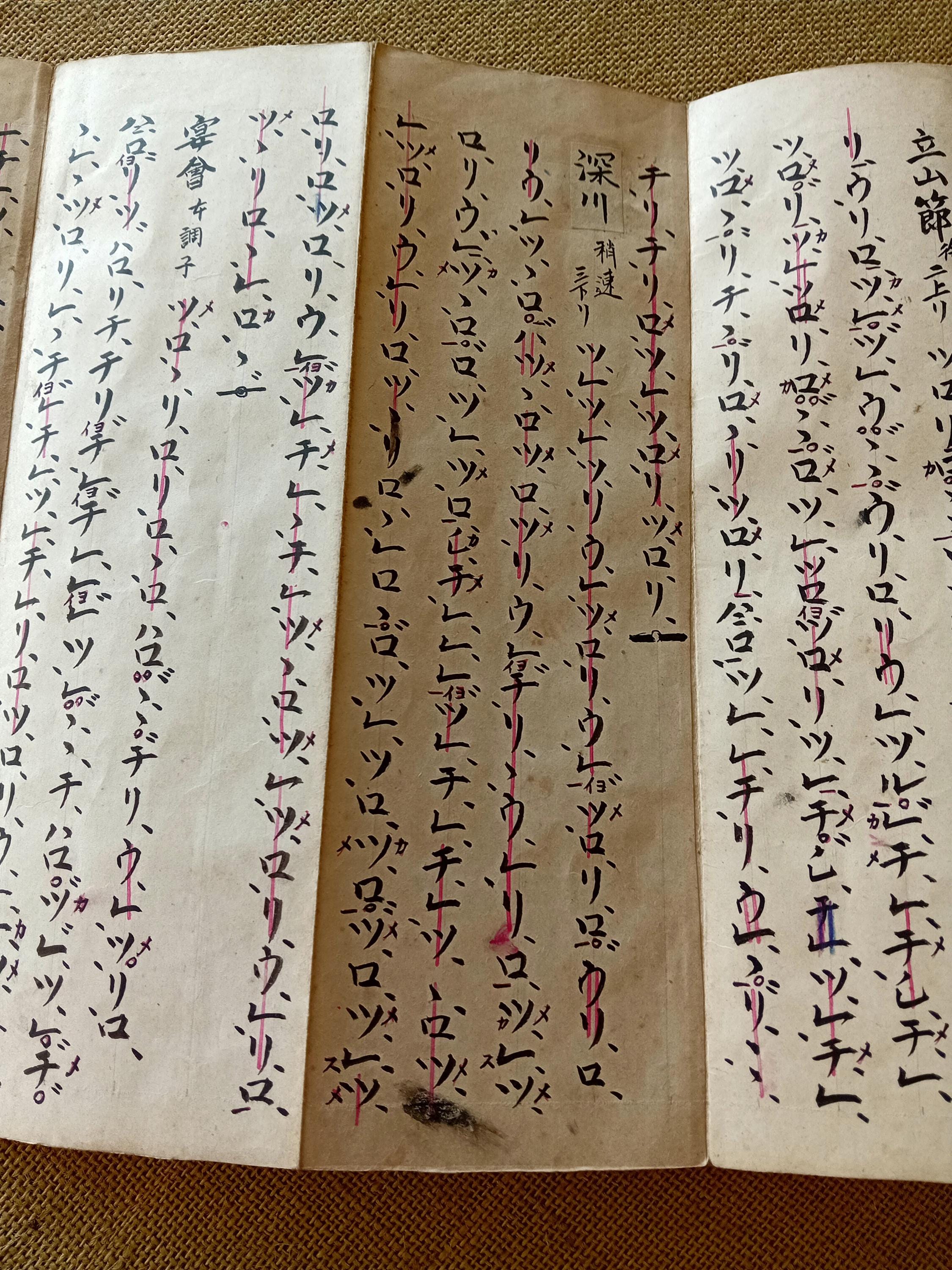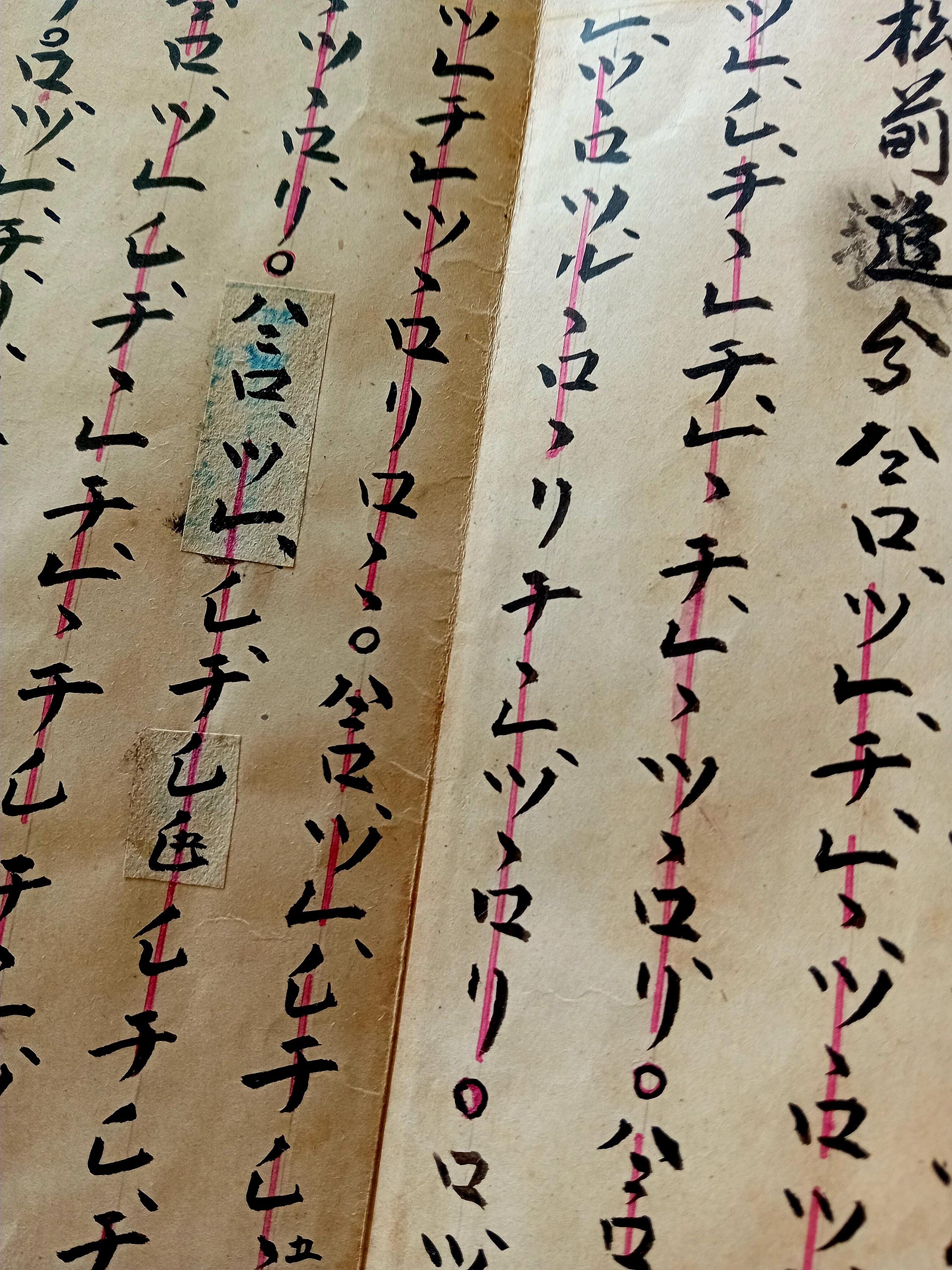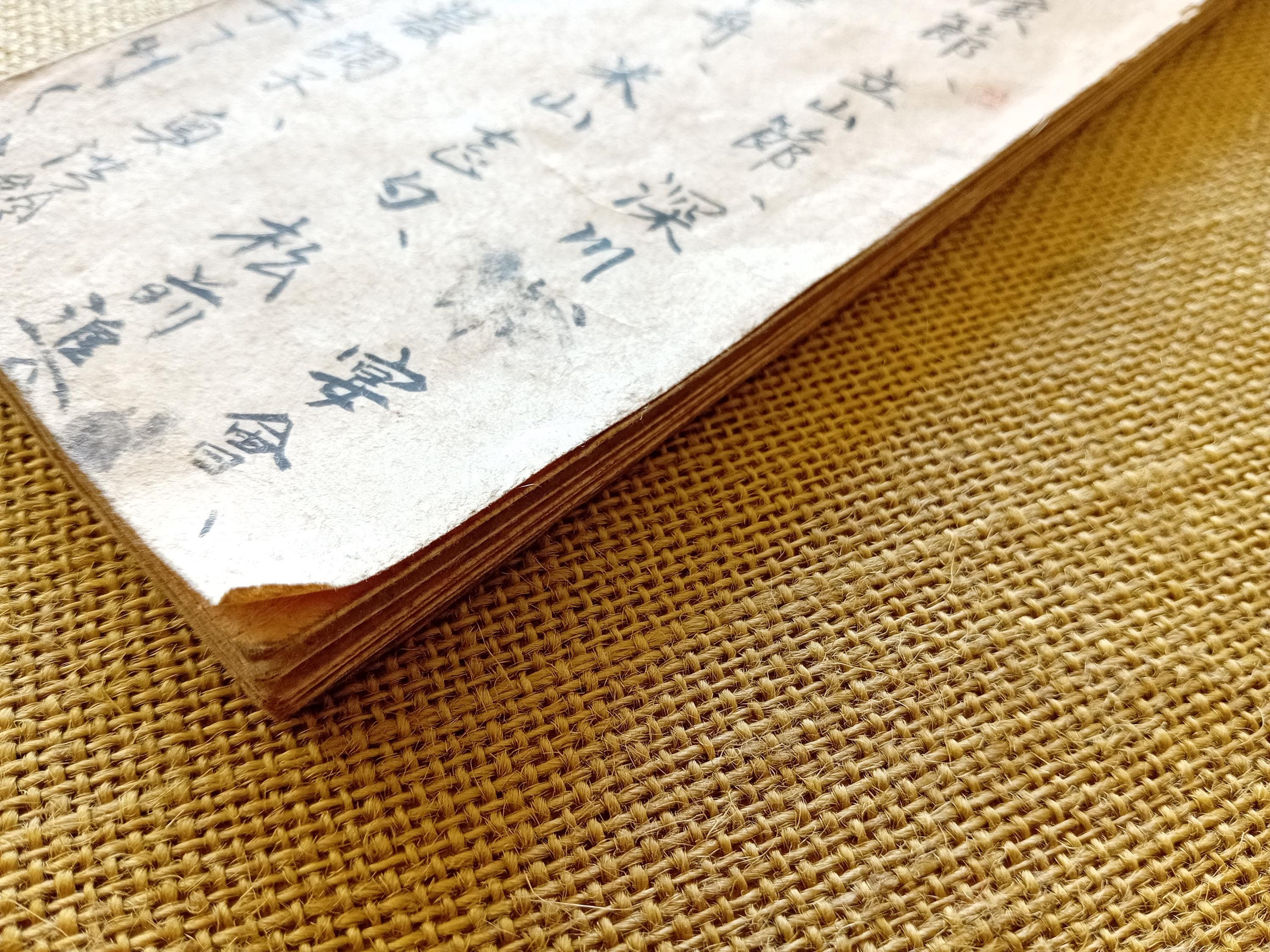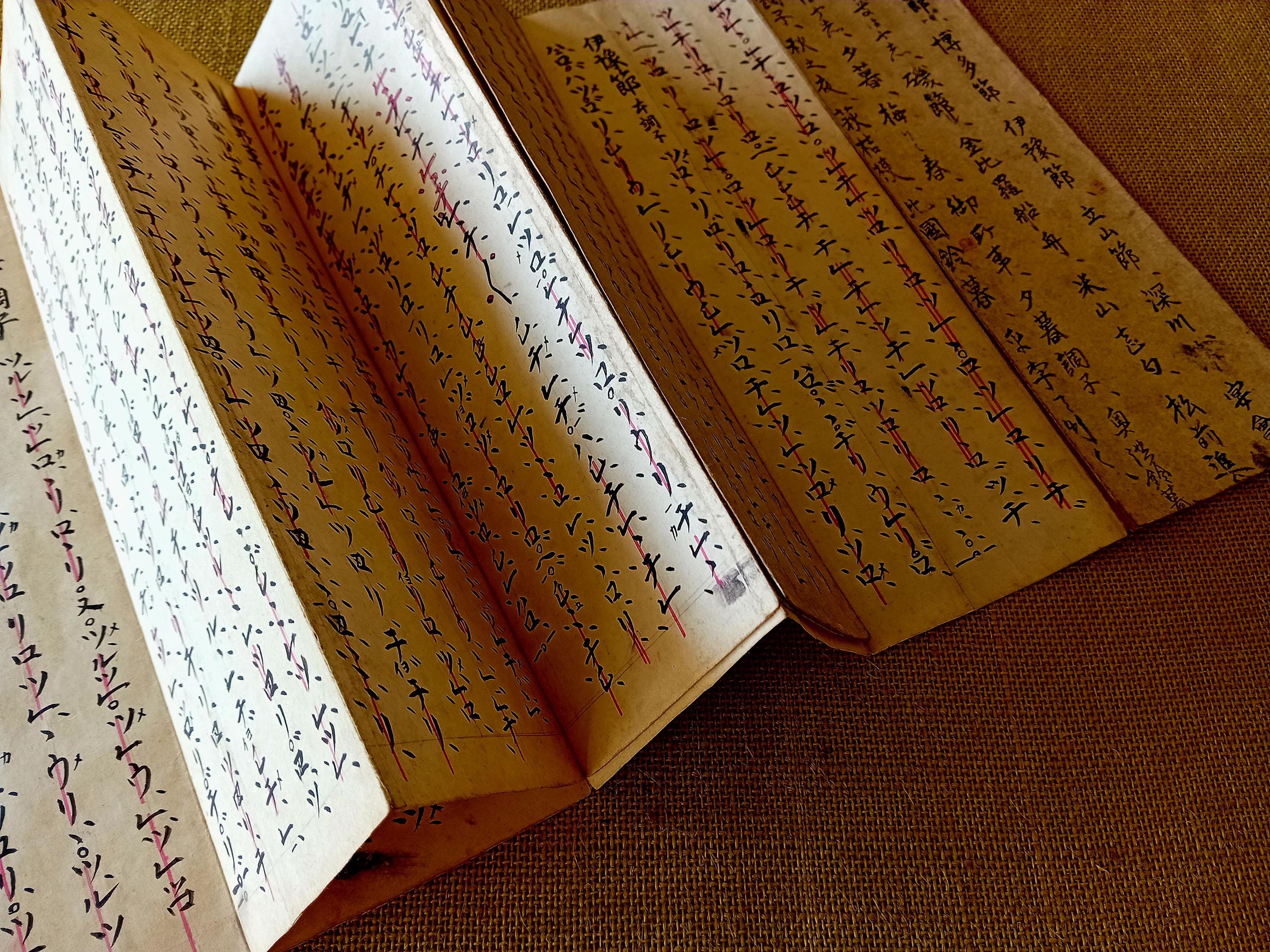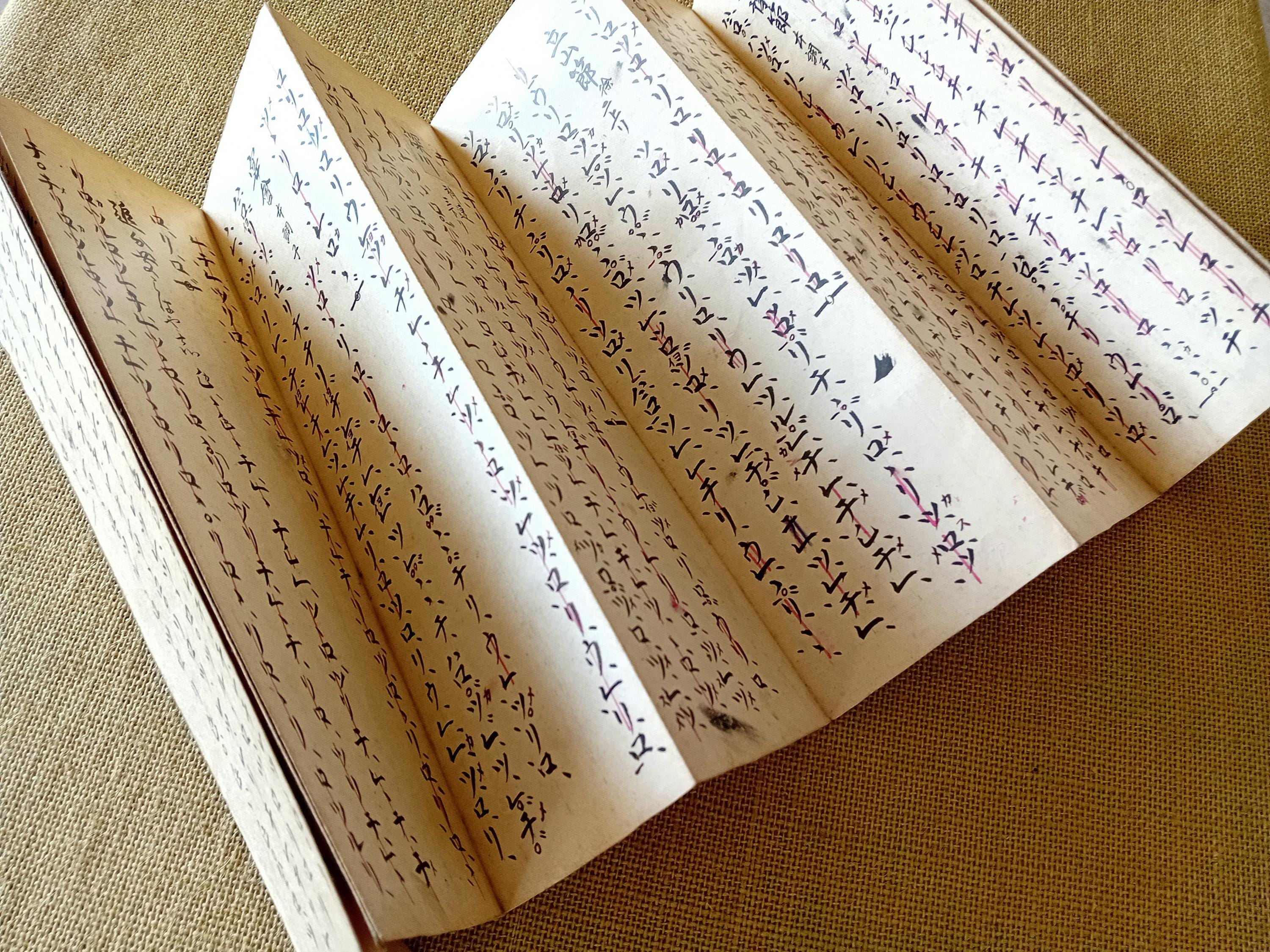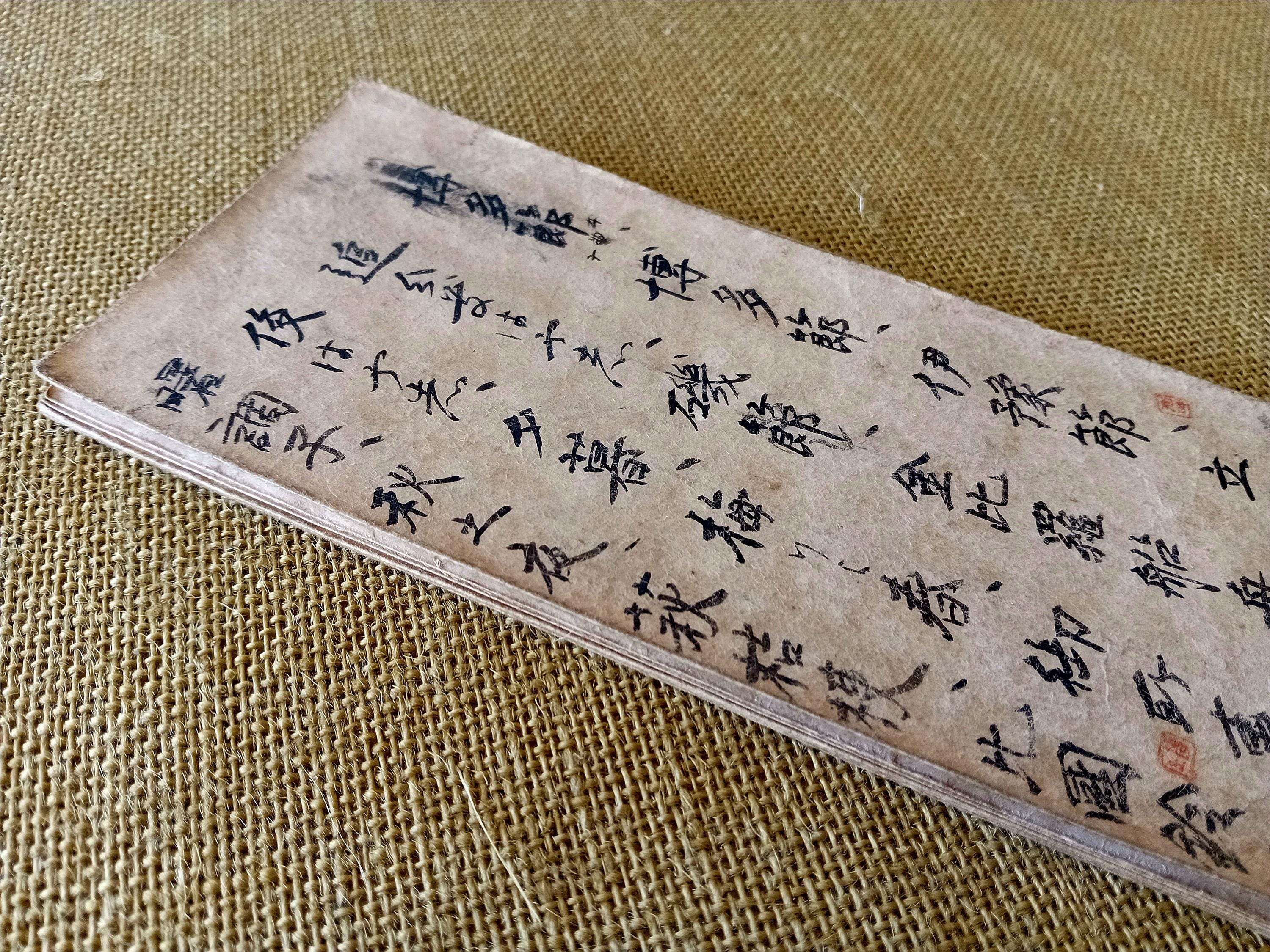Taishō-era Shakuhachi Orihon “Isobushi” – Teacher-corrected double-sided manuscript, Kinko-ryū notation, Japan c.1915–1930
$211.24 $234.71
Isobushi — “Song by the Shore.”
A traditional shakuhachi melody transmitted within the Kinko-ryū school, blending classical honkyoku and regional min’yō (folk) themes.
Description:
An exceptionally rare handwritten shakuhachi orihon (folding manuscript) from early 20th-century Japan — a complete, double-sided teaching copy used in the Kinko-ryū school of shakuhachi.
This remarkable document combines refined brush calligraphy in black ink with red phrasing marks and teacher’s handwritten corrections and pasted inserts — a direct trace of the living master-student transmission process.
The first page lists an extraordinary repertoire of classical and regional pieces, including:
Hakata-bushi – Song of Hakata, Fukuoka region
Iyo-bushi – Melody from Iyo, Shikoku
Tateyama-bushi – Song of Mount Tateyama
Fukagawa – Popular Edo/Tokyo tune
Konpira Funefune – Sailors’ song for the deity Konpira
Yoneyama Jinku – Song of Mount Yoneyama
Matsumae-hama – Coastal melody from Hokkaidō
Okihama Reibo – Variant of “Reibo,” “Breath of the Bell”
Gosho-guruma – “Imperial carriage” court piece
Ume ni Haru – “Spring and Plum Blossom”
…and other seasonal and ceremonial works forming a complete pedagogical anthology rather than a fragment.
Inside, fourteen folded panels are filled with traditional ro-tsu-re-chi-ri-ro notation, precise brushwork, and red-ink phrasing guides.
Two small cinnabar seals mark the master’s review — confirmation that this manuscript was part of an active teaching lineage rather than a printed edition.
Each correction, pasted strip, and added syllable reveals how shakuhachi music was transmitted before standardized printing.
It reflects not only notation but the ethos of direct oral transmission (denshō), where each master shaped subtle breath timing and phrasing for every student.
Condition:
Good condition for its age (c.1915–1930).
Some gentle wear, toning, and small usage marks consistent with authentic study use.
Folding structure remains complete and stable.
Both black and red inks are clearly legible.
Format: 14 panels, double-sided orihon
Dimensions (folded): approx. 28 × 9 cm
Medium: ink and cinnabar seal on traditional handmade paper
Significance:
Teacher-corrected shakuhachi manuscripts of this kind are exceptionally rare — most remained in private dojos and teaching lineages.
This orihon unites artistry, pedagogy, and musical history, offering direct insight into how Japanese flute traditions were taught before printed editions.
A museum-level document of Kinko-ryū practice, valuable both to collectors and researchers of Japanese calligraphy and musical culture.
For US buyers: this item enters the United States duty-free.
Shipping from Latvia
Processing time
1-3 business days
Customs and import taxes
Buyers are responsible for any customs and import taxes that may apply. I'm not responsible for delays due to customs.
Payment Options
Returns & Exchanges
I don't accept returns, exchanges, or cancellations
But please contact me if you have any problems with your order.

